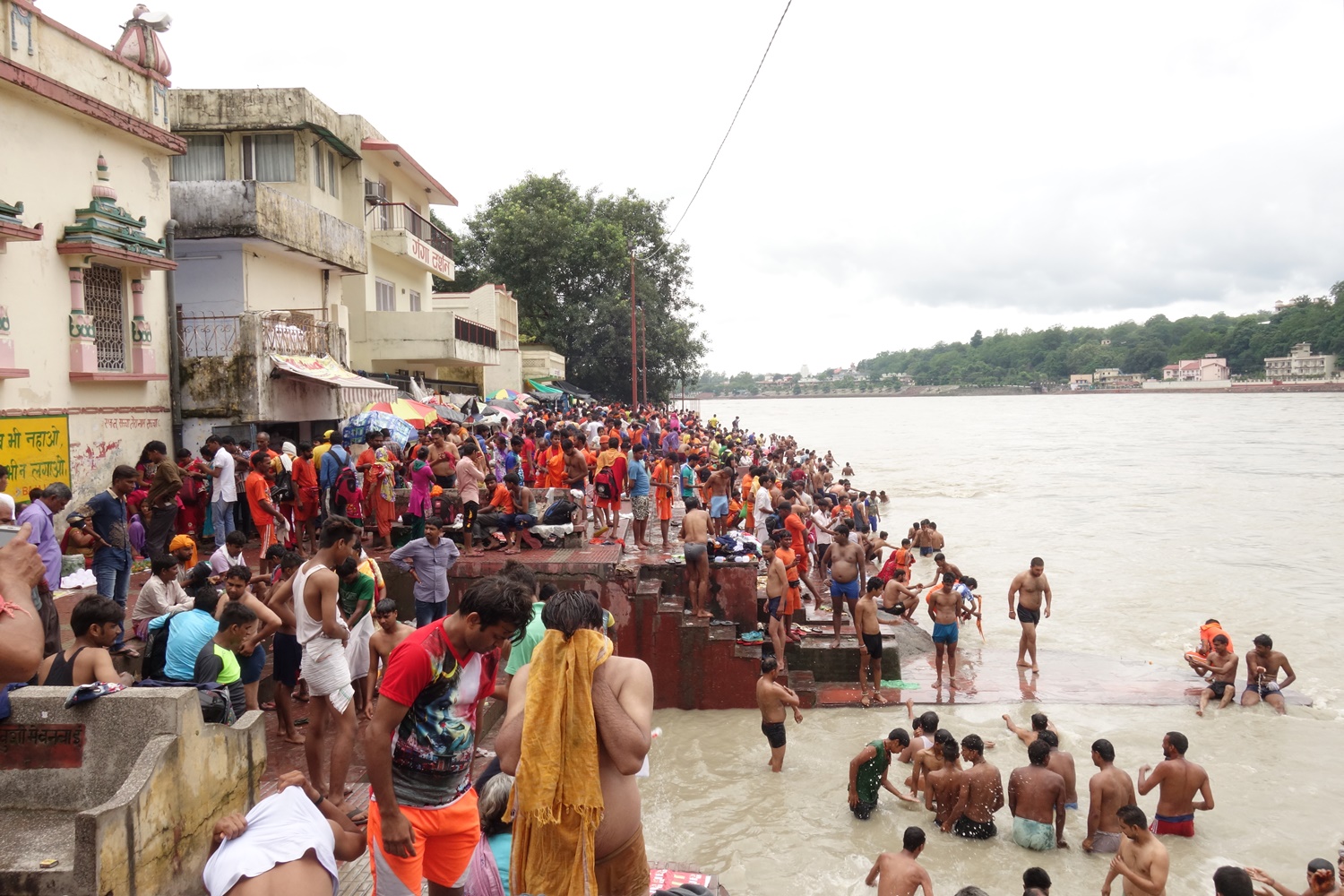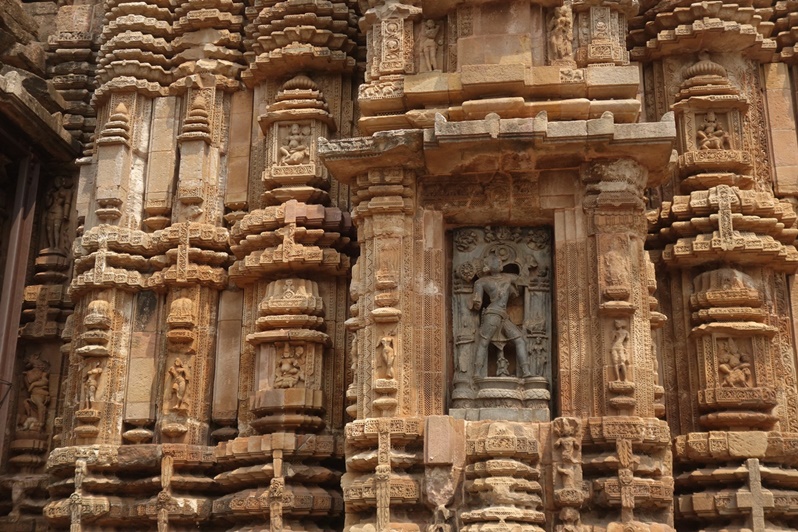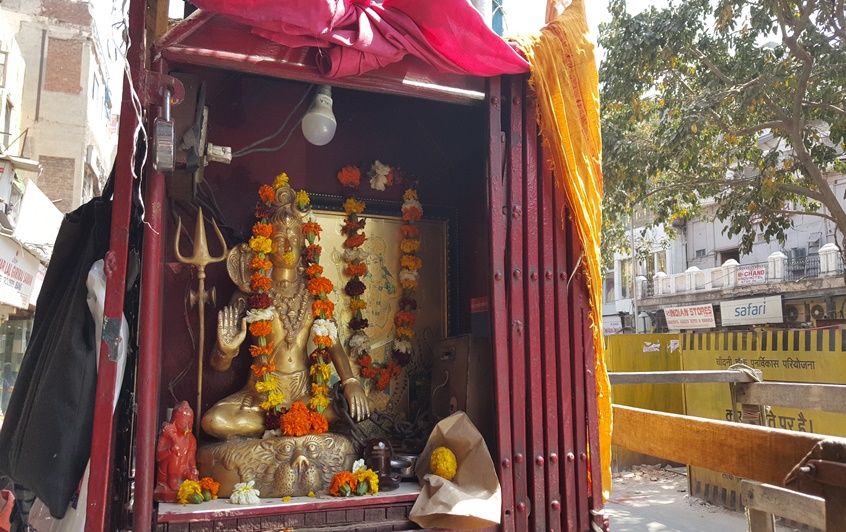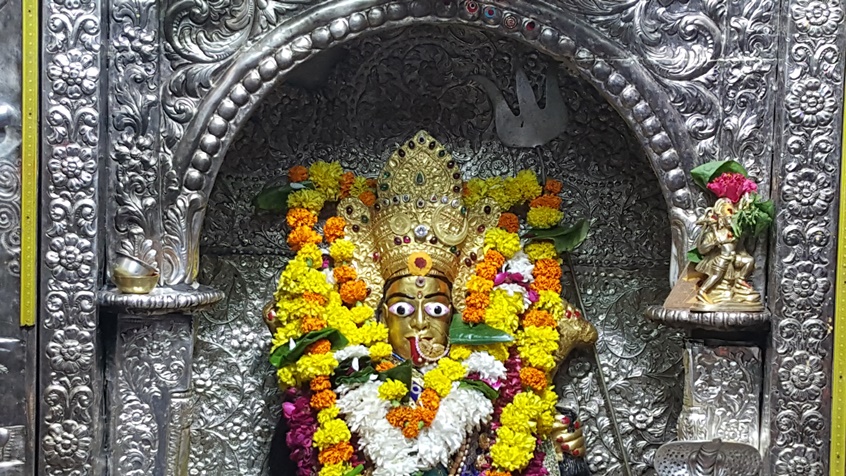
par Bertrand Bellaize, le 04 juillet 2020
Hindouisme : des Vedas à la recherche de l’absolu
Les hindous considèrent leurs textes sacrés comme révélés : les Rishis (sages) les ont transmis aux hommes qui se les ont transmis oralement dans un premier temps puis les textes sacrés se sont enrichis au travers des siècles.
L’hindouisme d’aujourd’hui est fortement imprégné des Vedas d’origine mais sa pratique a fortement évolué, de nombreux courants, écoles se sont crées. L’influence du Bouddhisme, du Jaînisme n’y est pas négligeable. Par ailleurs l’hindouisme a aussi emprunté aux cultes locaux et aux populations aborigènes au moment où il s’est imposé progressivement dans certaines régions moins accessibles (Himalaya, centre de l’Inde…).
Ainsi au cours de nombreux siècles, l’hindouisme s’est répandu dans l’ensemble de l’Inde avec de fortes disparités dans la forme des pratiques mais pas dans l’essence de la transmission sacrée. Telle région va privilégier le culte de Durga (par exemple au Bengale où la Sharadi Navaratri, fête en l’honneur de Durga, est intensément célébrée) ou celui de Shiva sous la forme de Pashupati… ces particularismes ont de nombreuses origines et les mythes en expliquent un grand nombre : la demeure de Shiva est ainsi le Mont Kailash, le Gange est loin de n’être qu’un seule fleuve, c’est avant tout Ganga, déesse et épouse de Shiva, symbole de la fécondité, de l’énergie descendue sur terre… Il existe des dizaines de lieux sacrés en Inde : rivières, montagnes, villes…
Telle ville, telle caste ou région va privilégier le culte de Shiva ou Vishnou, sous une forme particulière : voie de la connaissance ou alors pratique dévotionnelle, méditation ou encore pratique d’exercices mobilisant le corps (postures de Yoga, techniques de respiration…).
Les Vedas
L’hindouisme est basé sur les Védas, textes sacrés datant de plus de 3000 ans : ils sont au nombre de 4 : Rig-veda (recueils de poèmes), Samaveda (chants rituels), Yajurveda (formules sacrificielles) et l’Atharvaveda plus tardif (comprenant des aspects de pratique magique). La transmission des Védas se fait oralement par les Brahmanes, la caste des prêtres. Ces textes possèdent un aspect théorique, philosophique mais sont surtout destinés à décrire les rituels effectués par les Brahmanes : il s’agit avant tout d’honorer les dieux, qui sont multiples et de rétablir les équilibres qui ont pu être rompus suite aux actions humaines. C’est le but des sacrifices. L’univers est alors peuplé de dieux, démons et créatures mythiques qu’ils faut honorer ou combattre.
Les Brahmanes sont au plus haut de l’échelle sociale suivi par les guerriers (Kshatryas) puis les Vashyas ; agriculteurs, commerçants et artisans : ces trois castes sont considérées comme pures (elles se nommaient Arya, c’est à dire nobles) et peuvent donc accéder à la connaissance des Vedas, participer aux sacrifices, aux rituels… La dernière caste est constituée des serviteurs : les Shudras.
Une société hiérarchisée, élitiste
La vie quotidienne des Aryas est dirigée par les Vedas : rituels, cérémonies… ainsi que par de nombreux sacrements qui rythment toute leur vie, de la naissance à leur mort, dont le plus important est l’Upanayama, à l’age de huit ans pour les Brahmanes, à 11 ans pour les Kshatryas et 12 pour le Vashyas. Ce rite initiatique permet à l’enfant d’être né deux fois, la deuxième naissance étant spirituelle. Le cordon sacré lui est alors remis par son maître (guru).
La société d’alors est très hiérarchisée, élitiste, organisée autour de la vie religieuse et en fonction de sa caste, chacun doit accomplir les devoirs et rites qui lui incombent.
Si chacun agit conformément, l’harmonie sociale et plus globalement celui du monde est garantit. Les Vedas insistent sur l’importance du maintien de l’ordre cosmique qui régit la vie.
Dès lors, toute l’existence est imprégné par la vie religieuse.
Certains Dieux ont pour origine des phénomènes naturels tel Vayu, dieu des vents, Agni, dieu du feu…Indra est la plupart du temps considéré comme le roi des dieux, Prajapati comme le créateur (mais c’est parfois Surya, dieu du soleil, Varuna, Indra ou Agni).
Les dieux sont multiples, des milliers, mais en fait ils expriment la multiplicité des formes que prend l’absolu lorsqu’il s’incarne. En fait on peut dénombrer 33 dieux principaux (Aditi, divinités solaires, charger de faire régner l’harmonie, les Vasu, leurs enfants, personnification d’éléments naturels, les fils de Rudra représentant les souffles vitaux parfois bienveillants, parfois hostiles…), dont l’importance se réduit progressivement pour arriver à l’Un.
De nombreux rites
Le sacrifice est le pilier de la pratique spirituelle et le lien qui unit les hommes aux Dieux : c’est un échange, les hommes nourrissent les dieux qui reçoivent leurs bénédictions : bien être, prospérité, santé…
Ce sacrifice passe par le feu qui transmute la matière : il s’agit avant tout d’offrandes composées de lait, de beurre, de céréales, de sucreries parfois et lors d’occasions importantes, d’animaux. Ces cérémonies sont accompagnés de chants de paroles sacrées (mantras). Les rites domestiques sont quotidiens, au lever et au coucher du jour mais marquent aussi tous les évènements de l’existence : mariages, naissances…, la célébrations des ancêtres, des démons et autres créatures fabuleuses.
Le changement vers l’hindouisme : passage par le Brahmanisme
Cependant la pratique rituelle, au fil des siècles, se fige, perd son sens mystique au profit des demandes matérielles ; le pouvoir des Brahmanes, détenteur du savoir s’accroît au détriment des autres castes. L’équilibre se rompt progressivement, apparaissent alors deux nouvelles religions (vers le 5° siècle avant J-C) : le Bouddhisme et le Jaînisme (fondé par Mahâvîra). Dans le même temps, les commentaires des Védas se développent et sont couramment étudiés : Brahmana, Aranyaka ou les Upanishad : ces textes sont nommés Vedanta : soit fin des Vedas avec un sens d’achèvement mais aussi d’accomplissement.
L’hindouisme actuel doit beaucoup aux Vedas : les textes sacrés restent la référence, l’utilisation de mantras, certains rites (et même certains sacrifices, tel au Népal, au temple de Dashinkali).
Cependant le sens du sacré a évolué en profondeur pour se centrer sur le cheminement intérieur vers l’absolu : les questions sur la nature du divin, le sens de l’égo et la libération, la mort et les renaissances prennent le pas sur les rituels. La pratique s’est aussi fortement élargie, toutes les castes y ont accès et même si les Brahmanes ont gardé une place centrale, tout un chacun peut pratiquer de coeur à coeur : la dévotion s’est fortement développée, chacun peut honorer son Ishta Devata (sa divinité d’élection).
Par ailleurs le panthéon hindou a fortement évolué, les anciens dieux principaux, Indra, Vayu, … sont toujours présents mais ont une place secondaires et ont été remplacés par la Trimurti et leur Shakti : Brahman/Saraswati, Vishnou/Lakshmi et Shiva/Parvati (Kali-Durga). Ces dieux existaient déjà mais dans des rôles secondaires mais aujourd’hui le triptyque qu’ils représentent soit : création - maintien de l’équilibre – destruction/renouvellement est le fondement de l’hindouisme.
Une recherche de l’Absolu
De nouvelles formes de pratiques sont apparues et l’apparition des images (murtis), représentation des divinités a joué un rôle immense dans la pratique de la dévotion (Bhakti), de même que leur sortie des temples sous forme de statues lors des fêtes. L’accès aux dieux est devenu possible pour tous. Et les fêtes rassemblent dès lors un grand nombre de fidèles dans une grande mixité ou se mélangent hommes et femmes de toutes castes, milieux, origines.
Les divinités féminines ont pris une place primordiale, avec la notion de Shakti, l’énergie féminine créatrice, celle qui permet l’action, la manifestation.
La Pûjâ, rituel d’adoration, devient la pratique fondamentale, la non violence, prônée par le Bouddhisme et le Jaînisme est intégrée.
De nouveaux textes, tel le Mahabharata, le Ramayana, plus accessible, viennent enrichir les textes d’origine et contribuent à la popularisation de la doctrine hindoue.
La relation de maître à disciple devient primordiale : le Guru, libéré vivant (Jivan Mukta) transmet directement au disciple, l’aide dans sa quête de la libération : tout un chacun peut le rejoindre et y consacrer son existence si c’est son vœu le plus cher ! De nouvelles écoles, formes de transmission naissent alors un peu partout en Inde avec une vitale toujours présente.


